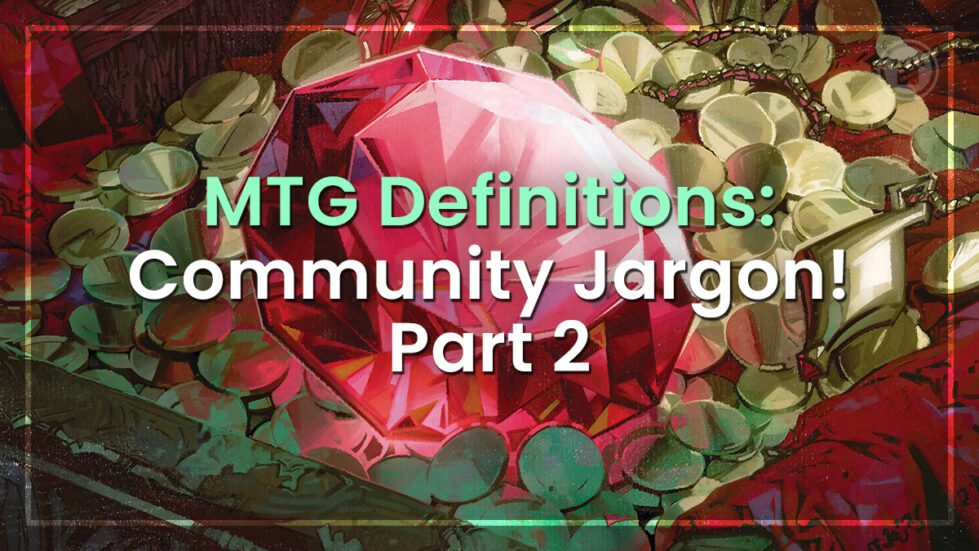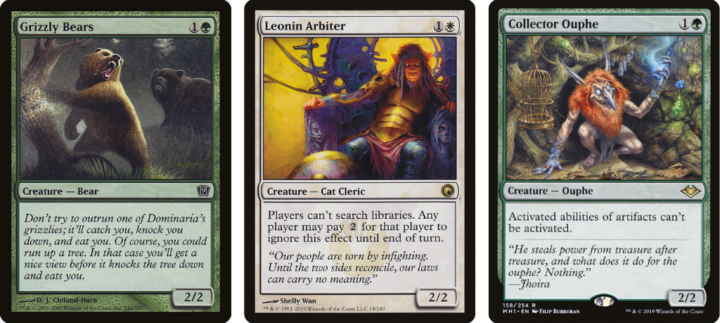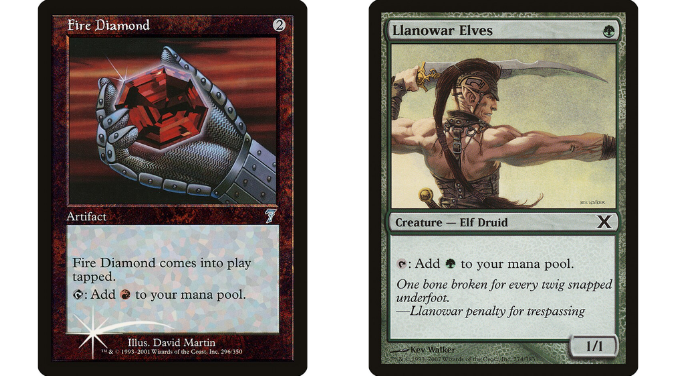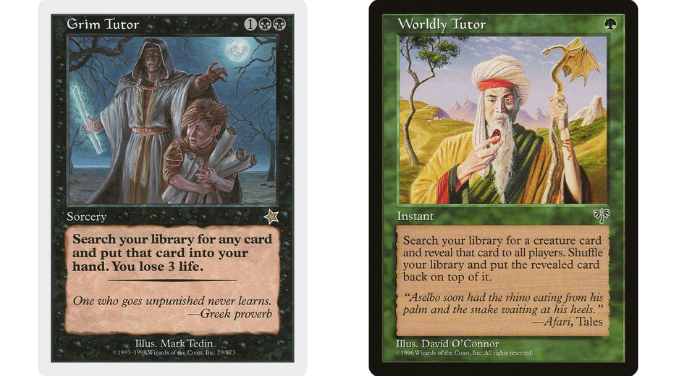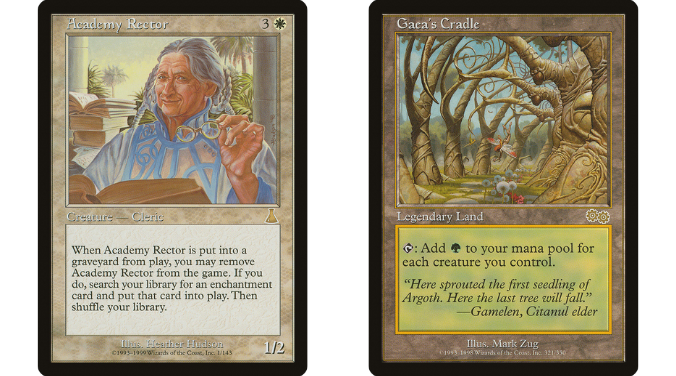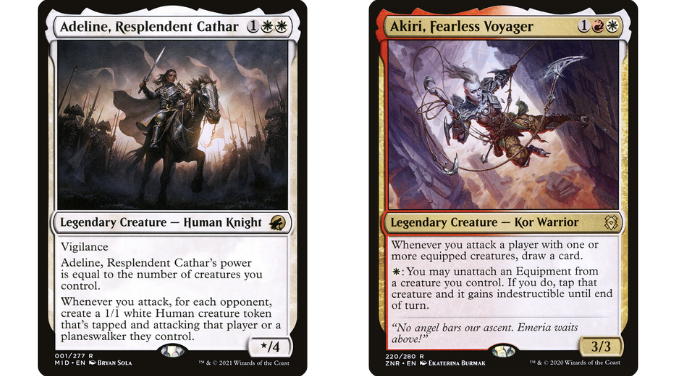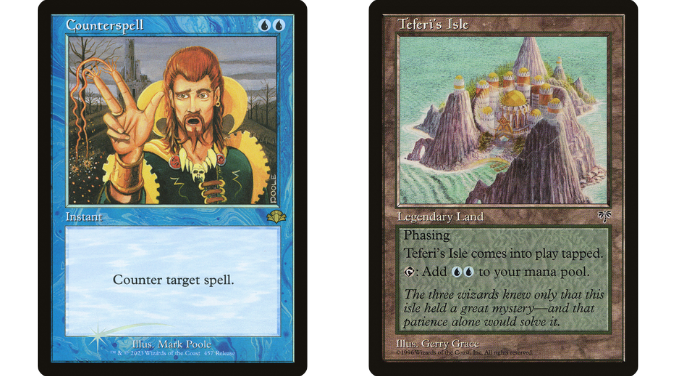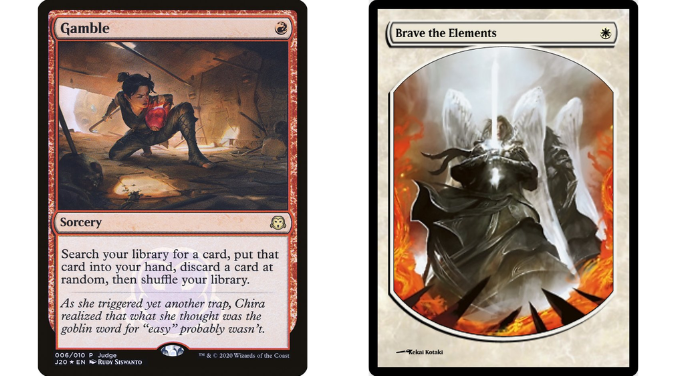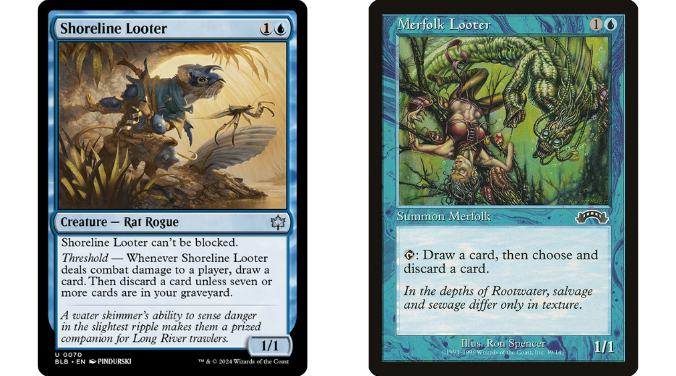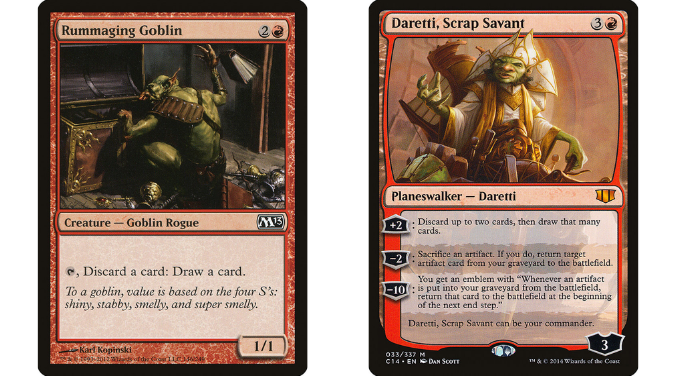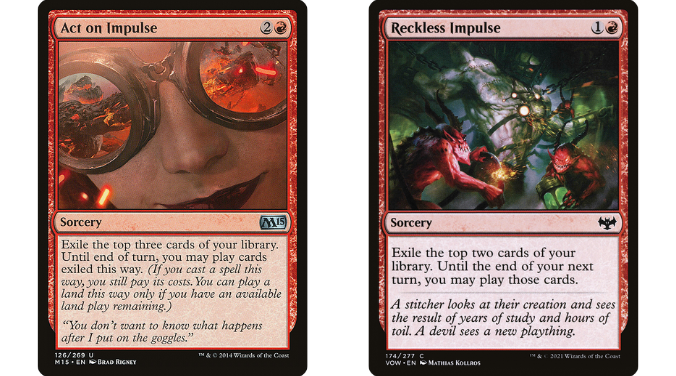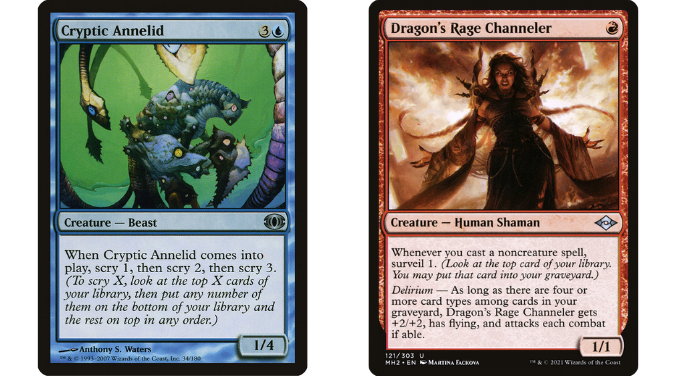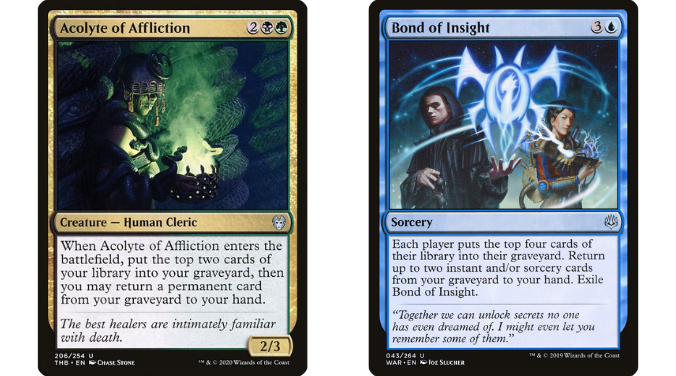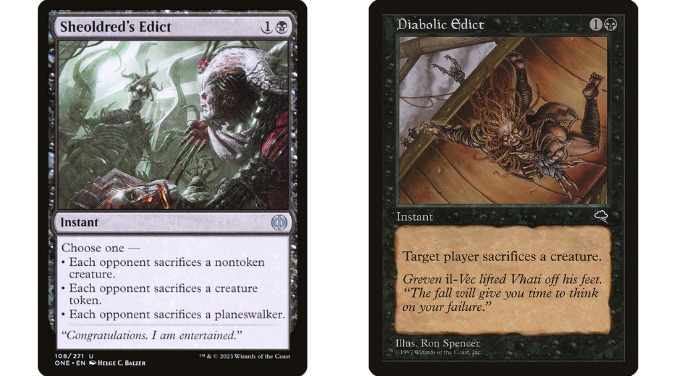The level of rules jargon and community slang which permeates Magic discourse is a serious hurdle for new players to surmount. Nobody using these terms is deliberately trying to gate-keep the hobby, of course. But it’s tricky to know which terms a casual listener might need explained in the middle of such a discussion. So I’m writing out the explanations here instead, building up a Magic glossary for anyone who needs it.
As I mentioned last week, it would take months to thoroughly define every possible bit of Magic jargon. But I hope that each of these articles has helped at least a few people out there catch onto a term or two that had confounded them in the past, or perhaps discovered where the specific words came from.
Bear/Hatebear
A lot of Magic slang comes about from players using the names of famous cards to describe later, similar cards – like calling any game console a “nintendo” instead of remembering its name.
In this case, “bear” refers to Grizzly Bears. For many years, 2/2 for two mana was seen as the “default” stat combination for creatures. Because Grizzly Bears was printed in a lot of early core sets, and the card was so simple, “Bear” became a way to describe any creature with those same basic stats.
Creatures with combat-related keywords and abilities aren’t considered “bears” in most cases, but there are plenty of creatures with 2/2 stats whose abilities don’t have any impact on their combat potential. “Hatebear” describes a sub-category of small creatures who have restrictive “stax”-like abilities that can shut down opposing strategies, such as Thalia, Guardian of Thraben or Collector Ouphe.
Mana Rock/Dork
A “mana rock” is an artifact where its primary ability is to produce mana. A “mana dork” is the same concept, but for a creature with little in the way of combat capability or other abilities.
Both types of card are very powerful and sought after when cost-efficient, since they allow you to increase your total mana production faster than you could by just playing lands (i.e., they are forms of “mana acceleration”).
Mana rocks in particular are often also ways to “fix” your mana (get access to different colors) since they produce colored mana but usually only cost generic mana to play.
Tutor
Another case of a card’s name coming to describe a whole category of similar effects, but this time it was somewhat of a deliberate effort by Magic designers! In the 1990s, every effect which let you search your deck for a card would have “Tutor” in the name: in lore terms, you are asking a powerful mage (or demon, or vampire) to teach you the spell you need!
Between the naming convention and some great artwork, the word stuck. Even though the naming of tutor spells is much more flexible in 2025, players still use “tutor” as a verb meaning “search your library for a card of your choice”.
Reserved List
The Reserved List is a relic from Magic’s early history, but one that still has some relevance today. Essentially, there was a significant fan outcry the first time Wizards announced a reprint set (Chronicles). Some collectors felt that reprinting rare cards and devaluing existing copies was a betrayal of trust, and threatened boycotts or legal action.
Wizards of the Coast responded by publishing a public letter and a list of cards. In that letter they promised not to reprint cards from that list, or print identical cards under a different name, ever again. But collectors were given fair warning that going forward, reprinting cards would be part of Magic whether they liked it or not.
The list of cards Wizards agreed not to reprint is called the Reserved List (RL), and as you might expect, the prices of cards on that list are all significantly inflated. The artificial scarcity created by the RL has hurt the accessibility of formats where older cards are legal, including Legacy and even Commander. However, Wizards remains adamant that the RL is legally binding and will not consider any challenge to it.
Chump Block
“Chump blocking” or just “chumping” refers to when you block an attacker with a smaller creature which will lose the combat, just to absorb the hit and save yourself some life. 1/1 tokens or small creatures with ETB triggers make natural chump blockers, since preventing a huge damage hit is the most value you’re going to get from that body!
There is also such a thing as a “chump attack” – swinging a smaller attacker into a huge blocker knowing your opponent will kill it. This usually comes about because you want to trigger an ability that requires you to attack (or get a creature blocked, or have one deal damage), and you’re willing to lose a creature to make that happen!
Represent/Hold Up
This term is used when discussing the mind games common to high-level Magic. In these games players usually know (or have a very good guess) of what cards are likely in their opponent’s deck or hand.
But because you know that they know, that creates the opportunity to bluff having specific instant-speed cards by choosing what mana to leave unspent on your turn. The classic example is a blue player deliberately setting aside (or “holding up”) two untapped Islands from the rest of their mana and then passing turn: they are now “representing Counterspell”.
This kind of passive bluffing-by-game-mechanics is a constant mindgame whenever instants are a factor in competitive play, which is to say almost always. The more often you can represent having a card like Counterspell, Teferi’s Protection or Settle the Wreckage without slowing down your gameplan, the harder it is for opponents to tell when you’re bluffing!
Make Them Have It/Fade
If your opponent is repeatedly representing a powerful defensive card, sometimes your only real option is to call their bluff! Veteran players will often invoke the mantra of “you have to make them have it” in such moments – a reminder that as bad as it might feel to walk into that kind of trap, sometimes it is still mathematically your best chance to win.
“Making them have it” also applies in situations where your opponent’s deck has cards (or sequences of cards) your deck can almost never beat. In those situations it can often be best to just stick to your guns and challenge them to draw and play those hard counters in time to make a difference.
Knowing the card that beats you and being lucky enough that your opponent does not draw or play it in time is sometimes referred to as “fading” that card.
Loot/Rummage
Magic has special rules terms for a lot of the most common game actions – think scry, mill, or surveil. But there’s still a few staples that aren’t officially named, which obviously means they get unofficial names instead.
“Loot” is the unofficial shorthand for drawing cards and then immediately choosing cards to discard. The term comes from Merfolk Looter, an early and popular example of that effect. Because the drawing and discarding all happens as part of a single spell (or ability), it is impossible to use the drawn cards (or do anything else) before also discarding the required amount.
“Rummage” is the slightly-less-common term for the opposite effect: ones where you have to discard cards first (sometimes as part of a cost) and then only afterwards get to draw. This name comes from Rummaging Goblin.
Impulse Draw
Both loot and rummage have previously been used on red spells to create a sense of “near-sighted” or reckless card draw. But in the 2020s, Wizards has instead settled on a new red draw effect: “exile the top card of your library, you may play it this turn”.
This effect also has an un(?)official name, this time one coined by Wizards design team themselves – “impulse draw”. Despite this, we still are yet to see that name used in the actual rules text of cards, probably because there is no one consistent way that these cards have been worded.
F6
This term is used as a verb: “to F6”, meaning to waive all opportunity to interact or take priority during an opponent’s turn. Derived from the keyboard shortcut which does exactly that in the Magic Online client, this is basically the polar opposite of “representing” things. If you declare you’re “F6’ed”, you straight-forwardly tell your opponent that you have zero defensive options at this moment, and encouraging them to play quickly and confidently.
Of course, the promise here is not enforced by the rules – you can tell someone you’re F6ed and then suddenly bust out interaction at the last minute. But generally this is a rare occurrence, and most players use the term in good faith, just to encourage faster play in tournament situations.
Velocity/Digging/”Seeing” Cards
Velocity is more of a advanced strategic concept than something you typically discuss over a casual Commander game. One way to describe it is how quickly and consistently you can draw or play a card which is shuffled somewhere in the middle of your deck (often described as “digging” for a card).
This is different from simply asking “how fast does your deck draw cards”, since you don’t necessarily need to draw all the cards in between your top card and the target card. You only need to “see” the cards, so any combination of draw, scry, surveil, explore, and similar effects will help get you closer to what you need.
Self-mill is actually the most efficient way to increase the velocity for most decks. So long as you have reliable ways to get the desired cards back out of your graveyard after milling them, building decks around these effects allows you to “dig” much faster – hence the prevalence of graveyard recursion in combos like Thassa’s Oracle.
DIGGING FOR ANSWERS
I think it’s really telling how often Magic jargon evolves naturally from using the names of old, familiar cards as placeholders for any similar effect. There may be tens of thousands of unique cards, but a lot of them are simply iterations on familiar tropes – new actors filling the same fundamental roles with just a bit of individual flair.
Even the designers of the game understand their creations this way – it’s why we see community terms referenced in the names of cards like Faithless Loot-ing or Sheoldred’s Edict. Understanding these through lines will help you remember old cards and evaluate new ones, and ultimately increase your skill and enjoyment of Magic.

Tom’s fate was sealed in 7th grade when his friend lent him a pile of commons to play Magic. He quickly picked up Boros and Orzhov decks in Ravnica block and has remained a staunch white magician ever since. A fan of all Constructed formats, he enjoys studying the history of the tournament meta. He specializes in midrange decks, especially Death & Taxes and Martyr Proc. One day, he swears he will win an MCQ with Evershrike. Ask him how at @AWanderingBard, or watch him stream Magic at twitch.tv/TheWanderingBard.

